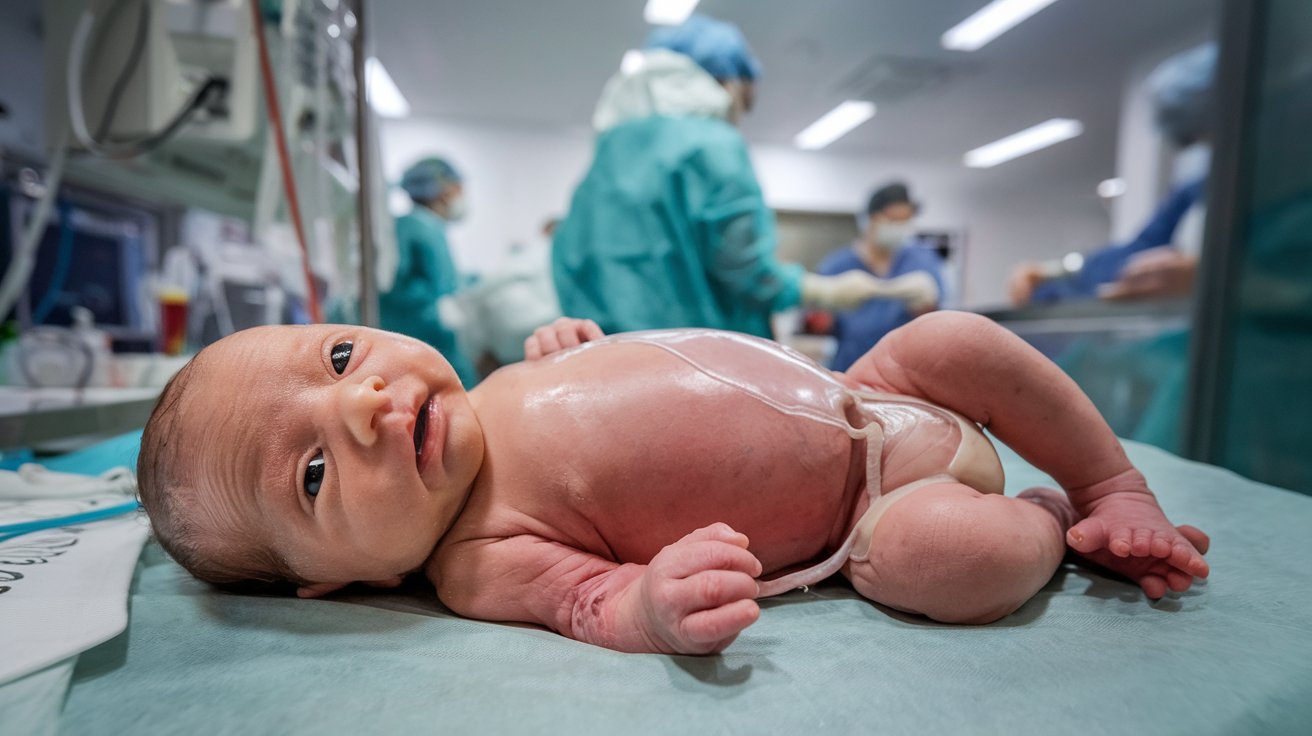
Omphalocele Exstrophy Imperforate Anus (OEIS) complex is a rare congenital disorder that affects multiple organs and systems in the body. This condition involves four main abnormalities: omphalocele, where the intestines or other abdominal organs protrude outside the belly; bladder exstrophy, where the bladder is exposed outside the body; imperforate anus, where the anus is either absent or blocked; and spinal defects. Understanding OEIS is crucial for parents, caregivers, and medical professionals to provide the best care and support for affected individuals. This blog post will delve into 25 intriguing facts about OEIS, shedding light on its causes, symptoms, treatments, and the daily challenges faced by those living with this complex condition.
Key Takeaways:
- OEIS is a rare condition affecting the abdomen, bladder, and intestines. Early diagnosis and multidisciplinary care are crucial for effective treatment and long-term support.
- Treatment for OEIS involves multiple surgeries and long-term care. Supportive services, including education, therapy, and psychological support, play a vital role in improving the quality of life for affected individuals.
What is Omphalocele Exstrophy Imperforate Anus?
Omphalocele Exstrophy Imperforate Anus (OEIS) is a rare congenital condition. It involves multiple birth defects affecting the abdominal wall, bladder, and intestines. Understanding this complex condition can help in managing and supporting affected individuals.
- OEIS is an acronym for Omphalocele, Exstrophy, Imperforate Anus, and Spinal defects.
- This syndrome occurs in approximately 1 in 200,000 to 400,000 live births.
- The exact cause of OEIS is unknown, but it is believed to involve genetic and environmental factors.
- Omphalocele refers to a condition where the intestines or other abdominal organs protrude outside the belly through the navel.
- Exstrophy means the bladder is turned inside out and exposed outside the body.
- Imperforate anus indicates the absence of a normal anal opening.
- Spinal defects, such as spina bifida, are often present in individuals with OEIS.
Symptoms and Diagnosis
Recognizing the symptoms and diagnosing OEIS early is crucial for effective treatment. Here are some key points about the symptoms and diagnosis process.
- Symptoms of OEIS are usually visible at birth due to the external abnormalities.
- Prenatal ultrasound can sometimes detect OEIS before birth.
- Genetic testing may be recommended to rule out other syndromes or genetic conditions.
- A multidisciplinary team, including pediatric surgeons, urologists, and geneticists, is often involved in the diagnosis.
- Imaging studies like X-rays, MRIs, and CT scans help in assessing the extent of the defects.
Treatment Options
Treating OEIS involves multiple surgeries and long-term medical care. Here are some facts about the treatment options available.
- Initial surgery often focuses on closing the omphalocele and repairing the bladder exstrophy.
- Creating a functional anal opening is another critical surgical procedure.
- Spinal defects may require neurosurgical intervention.
- Post-surgical care includes monitoring for infections and ensuring proper healing.
- Long-term follow-up is necessary to address any complications and support development.
Living with OEIS
Living with OEIS presents unique challenges, but with proper care, individuals can lead fulfilling lives. Here are some insights into daily life with this condition.
- Children with OEIS may require special education services due to developmental delays.
- Physical therapy can help improve mobility and strength.
- Regular check-ups with a urologist are essential to monitor bladder function.
- Psychological support is crucial for both the affected individuals and their families.
- Support groups and online communities can provide valuable resources and emotional support.
Research and Future Directions
Ongoing research aims to improve the understanding and treatment of OEIS. Here are some recent developments and future directions in this field.
- Advances in prenatal imaging are improving early detection rates.
- Genetic research is exploring potential causes and risk factors for OEIS.
- New surgical techniques and materials are enhancing the outcomes of reconstructive surgeries.
Final Thoughts on Omphalocele Exstrophy Imperforate Anus
Understanding Omphalocele Exstrophy Imperforate Anus (OEIS) is crucial for anyone dealing with this complex condition. This rare congenital disorder affects multiple organ systems, requiring a multidisciplinary approach for effective management. Early diagnosis and intervention can significantly improve outcomes. Advances in medical technology and surgical techniques have made it possible for many individuals with OEIS to lead fulfilling lives. Support from healthcare professionals, family, and specialized organizations plays a vital role in navigating the challenges associated with OEIS. Awareness and education about this condition can help reduce stigma and promote better care. By staying informed and advocating for those affected, we can contribute to a more inclusive and supportive environment for individuals with OEIS.
Frequently Asked Questions
Was this page helpful?
Our commitment to delivering trustworthy and engaging content is at the heart of what we do. Each fact on our site is contributed by real users like you, bringing a wealth of diverse insights and information. To ensure the highest standards of accuracy and reliability, our dedicated editors meticulously review each submission. This process guarantees that the facts we share are not only fascinating but also credible. Trust in our commitment to quality and authenticity as you explore and learn with us.
